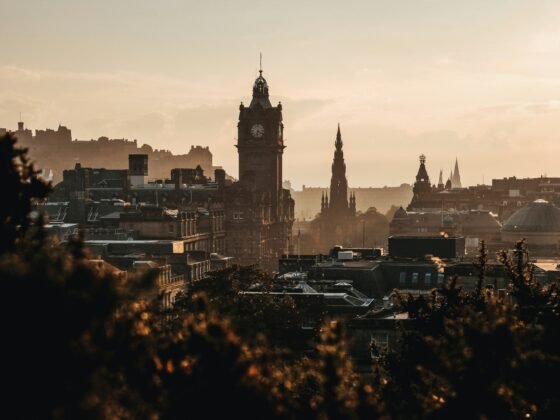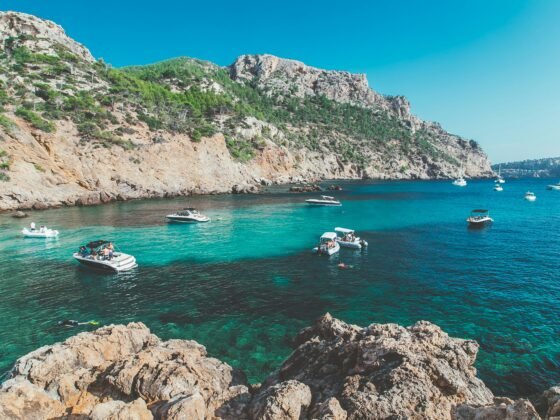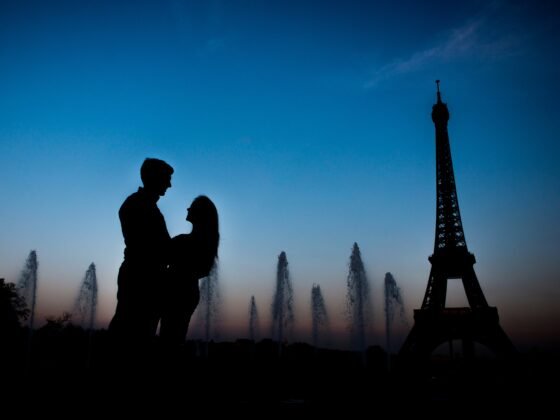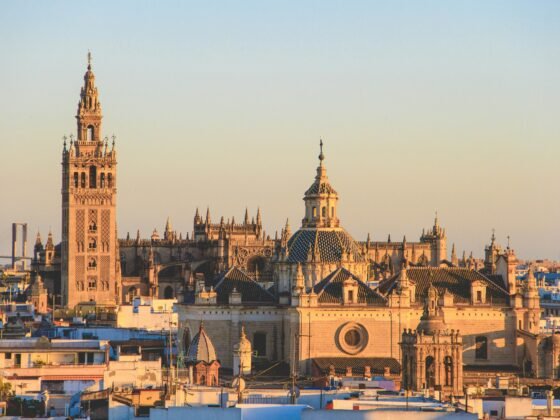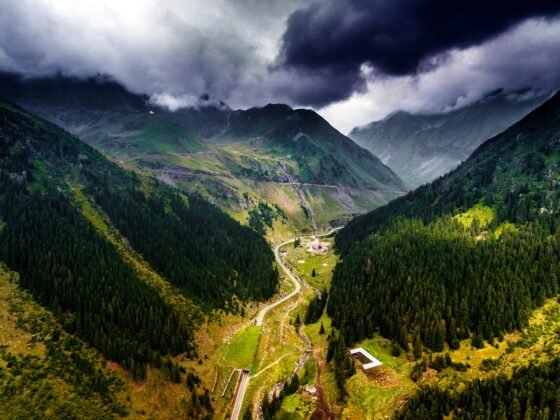Since time immemorial, humans have always thought that the gods reside in the skies. This belief extended to high peaks, and soon most locals living near the high peaks started associating mountain peaks with religion or spirituality.
It is no wonder that many Hindu and Buddhist masters have meditated in the peace of the mountains, further strengthening the belief that mountains are spiritual centers.
In this article, we will journey across some of the most sacred Himalayan mountains in the world where you can go trekking. Let’s begin.
- Mount Kailash (Tibet)
Mount Kailash is perhaps the most religious mountain on earth. The sacred mountain lies in western Tibet near India and Nepal borders and is revered by Hindus, Buddhists, and Jain. In Hinduism, Kailash is the abode of lord Shiva, the creator, and destroyer of the world.
Buddhists associate this mountain with many Bodhisattvas and consider Kailash a perfect place for meditation and spiritual practices. The Jains believe that the first Jain Tirthankara, Rishabhdeva, attained enlightenment at Kailash Mountain. Due to these reasons, Kailash Peak is so revered that it is banned from climbing.
Mount Kailash trek is strenuous, so you must be mentally determined and physically tough. The traditional circling of Mt. Kailash is called Kailash Parikrama, which lasts for three days, wherein the devotees cover at least 52 kilometers (32 miles) of harsh terrain, reaching Dolma La Pass 5,630 meters (18,471 feet).
The inhabitants near Kailash Mountain are Tibetans, and during the trek, you will get to experience the Tibetan tradition, culture, and lifestyle. Throughout the Kailash trek, you will immerse yourself in a predominately spiritual and religious setting. The mani walls and prayer flags in the route constantly remind you of the spiritual side of life.
| Feature | Description |
| Highest point | 6,638 m (21,778 ft) |
| Prominence | 1,319 m (4,327 ft) |
| Coordinates | 31°4′0″N 81°18′45″E / 31.06667°N 81.31250°E |
| Native name | Kailāsa (Sanskrit) or kelāsa (Tibetan) |
| Location | Burang County, Tibet Autonomous Region, China |
| Parent range | Gangdisê Range |
| Religious significance | Mount Kailash is an important holy site for both Hindus and Tibetan Buddhists. Also referred to as the home of the Hindu god: Shiva. |
- Mount Everest (Nepal)
Mount Everest, the highest peak in the world, lies at the border between China and Nepal. It is known as Sagarmatha in Nepal and Chomolungma in Tibet. Mount Everest was first recognized as the tallest peak in the world in 1852 and first summited a century later in 1953.
The Everest region is inhabited by the Sherpas, who mostly follow Buddhism. The Sherpas worship this mountain as the “Goddess Mother of the Earth”, and believe it is home to powerful deities and spirits.
To reach Mount Everest, you must fly to Lukla from Kathmandu. You can take the road route, but the road network is poor. From Lukla, the trek starts, passing through Namche Bazaar, Everest base camp and other settlements.
However, there are alternative routes you can pursue from Namche, including the Gokyo region. The trek trails are themselves challenging, but if you want you can make it even more adventurous by adding three high passes to the itinerary.
The local Sherpas mainly follow Buddhism. You can see the Buddhist influences from the trekking trails as you pass through almost continuous prayer flags, mani walls, and several monasteries. Sherpas refrain from harming or killing flora and fauna. For this reason, meat consumed in the Everest region is imported.
During the trek to Everest, the humongous mountains and the serenity will leave you with awe and wonder. There are famous monasteries like Khumjung and Tengboche in the Khumbu (Everest) region. Moreover, the climbers heading to the Everest summit participate in a Pooja performed by a Lama Guru. This tradition has been going on in the Everest region for generations.
| Feature | Description |
| Highest point | 8,848 meters (29,029 feet) |
| Prominence | 8,848 meters (29,029 feet) |
| Coordinates | 27°59′ N 86°56′ E |
| Native name | Sanskrit and Nepali Sagarmatha, Tibetan Chomolungma, Chinese (Pinyin) Zhumulangma Feng or (Wade-Giles romanization) Chu-mu-lang-ma Feng, also spelled Qomolangma Feng |
| Location | On the border between Nepal and Tibet Autonomous Region of China |
| Parent range | Mahalangur Range, part of the Great Himalayas |
| Climbing | Everest is a popular destination for mountaineers, with expeditions taking place from both the north and south sides of the mountain. |
| Religious significance | Everest is considered a sacred mountain by both Buddhists and Hindus |
- Nanda Devi (India)
Nanda Devi is the second-highest mountain in India and the twenty-third-highest peak in the world. It lies in the Uttarakhand State in northeastern India. Hindus consider this mountain as the incarnation of the goddess Parvati – the wife of Lord Shiva. In fact, Nanda Devi is a two peaked massif, and you can find these peaks mentioned in Shrimad Bhagavatam, a Hindu scripture.
You can take part in the Nand Devi Base Camp trek that takes you to the upper regions of Kumon. From the trials, you can enjoy the views of Nanda Devi (7,816m), Trishul (7,074m), Panch Chuli peaks, and Nanda Kot (6,861m). It is a moderate trek, and you will reach a height of 13,123 ft (4,000m).
This region is home to several ethnicities, the Garhwali and Kumaoni people. These ethnicities have their own distinct cultures and traditions, and trekkers can learn about the lifestyle of these locals. This region is predominately Hindu.
The trek regions are full of Hindu temples and statues. You will meet numerous sadhus (Hindu holy men) and pilgrims visiting temples or other holy places in this region. Hindu festivals such as Navratri, Diwali, and Nanda Devi Raj Jat Yatra are celebrated in the trek regions with full fervor.
| Feature | Description |
| Highest point | 7,816 meters (25,643 feet) |
| Prominence | 3,139 meters (10,299 feet) |
| Coordinates | 30.32000°N / 79.58000°E |
| Native name | Nanda Devi |
| Location | Indian Garhwal Himalaya |
| Parent range | Garhwal Himalayas |
| Climbing | Nanda Devi is a challenging mountain to access and climb. The first successful ascent of the main summit was by Tilman and Odell in 1936 via the south ridge. In 1976, Americans James States, Lou Reichardt and John Roskelley climbed the main summit by a new route, the North Ridge. |
| Religious significance | Nanda Devi is considered a sacred mountain in Indian folklore and is known as the daughter of the Himalaya. |
- Mount Kanchenjunga (Nepal)
Mount Kanchenjunga (8,586 meters), the third-highest mountain in the world, is located on the border between Nepal and the Indian state of Sikkim. The name “Kanchenjunga” is derived from the Tibetan language and translates to “The Five Treasures of Snow,” referring to the five peaks that make up the mountain. The mountain is considered sacred by the Nepalese and Sikkimese people and it plays a significant role in their religious beliefs and folklore.
Trekking to Mount Kanchenjunga is a challenging and rewarding endeavor. There are two main trekking routes – the Kanchenjunga North Base Camp Trek in Tibet (China) and the Kanchenjunga South Base Camp Trek in Nepal. Most trekkers favor the Nepali side.
The South Base Camp Trek is a long and demanding journey and takes around 20-25 days to complete. You will cross high passes, dense forests, and remote villages while enjoying the views of Mount Everest, Mount Makalu, and Mount Everest.
The Rais, Limbus, Sherpas, and Gurungs live along the vicinities of Mt. Kanchenjunga, and you can immerse yourself in the local culture by staying in traditional tea houses and interacting with the friendly villagers. At the right seasons, you can witness colorful festivals, hear traditional music and songs, and observe the daily rituals of the locals.
Trekking in the shadow of Mount Kanchenjunga offers numerous spiritual experiences. The sheer size of Kanchenjunga evokes respect and awe, evoking a sense of humility and connectedness to the natural world. The journey through remote landscapes, away from the distractions of modern life, allows for introspection and a sense of inner peace.
The local monasteries and prayer flags along the trail create a spiritual ambiance. The sound of monks chanting and the sight of colorful prayer flags fluttering in the wind create a serene and meditative atmosphere.
| Feature | Description |
| Highest point | 8,586 meters (28,169 feet) |
| Prominence | 3,922 meters (12,867 feet) |
| Coordinates | 27°42′12″N 88°08′51″E |
| Native name | Kanchenjunga, Kangchenjunga, or Kinchinjunga |
| Location | On the border between Nepal and India |
| Parent range | Great Himalayas |
| Climbing | Kanchenjunga is a challenging mountain to climb, with an elevation of 8,586 meters (28,169 feet). The easiest route is a glacier/snow/ice climb |
| Religious significance | Kanchenjunga is considered a sacred mountain in Indian folklore and is associated with the deity Dzo-nga. |
- Mount Annapurna (Nepal)
Mount Annapurna gets its name after a Hindu goddess of nourishment and abundance, and the locals in the Annapurna region revere this mountain. There are several temples and monasteries interspersed in the Annapurna region. The most distinct is the Muktinath Temple, a holy site for both – Buddhists and Hindus.
There are several trek routes in the Annapurna region. So, depending on the path, the trek can be easy, moderate, or challenging. Annapurna treks can last from a few days to weeks. Here are some of the options.
Annapurna Base Camp Trek: This moderate trek takes you to the Annapurna Base Camp (4,130m). The trail starts from the subtropical villages and gradually ascends, taking you closer to Annapurna massif and other nearby mountains. You can complete this trek in less than a week.
Annapurna Circuit Trek: It is of the most popular classic treks in Nepal, the Annapurna Circuit circumnavigates the entire Annapurna massif. It is a longer and more challenging trek, passing through diverse landscapes and cultural villages. This trek generally lasts for two weeks. The highest trek point is Thorongla High Pass at 5,416m.
Ghorepani Poon Hill Trek: This is a short and easy trek especially famous for breathtaking sunrise views over the Annapurna and Dhaulagiri Mountain ranges from Poon Hill.
The Annapurna region is home to diverse ethnic groups, including Gurung, Magar, Thakali, and others. Each community has its unique culture, tradition, lifestyle and even language. As the locals are quite friendly, you can interact with the locals to learn about them and their lifestyle if you wish
As you travel to the extreme landscapes, consisting of humongous mountains, deep gorges, and stunning villages, you will suddenly realize the vastness of nature and its richness. This experience is humbling and spiritually uplifting.
| Feature | Description |
| Highest point | 8,091 m (26,545 ft) above sea level |
| Prominence | 2,984 m (9,790 ft) |
| Coordinates | 28°35′46″N 83°49′13″E / 28.59611°N 83.82028°E |
| Native name | Annapurna |
| Location | Gandaki Province, Nepal |
| Parent range | Great Himalaya Range |
| Climbing | Climbers typically approach Annapurna from the north or northwest, with the northwest spur being the most common route. |
| Religious significance | Named after the Hindu goddess of food and nourishment, Annapurna |
Conclusion
The Himalayas have intrigued people for generations. The inhabitants of the immediate northern side of the Himalayas, mainly along the Tibetan region follow Buddhism, while in the southern side, mainly in India, and Nepal, the locals practice Hinduism.
The Buddhist masters have dwelled in caves and caverns to meditate. Similarly, the Hindu scriptures and mythology state the Himalayas as the abode of the gods. Mahadev, one of the principal Hindu gods, is said to stay at Mount. Kailash.
The hustle and bustle of the modern lifestyle has distanced people from nature. The noise, the pollution, and the electronic gadgets constantly pester a modern man at a scale never seen before. So, if you want to connect with nature while appreciating the vastness of nature, we recommend you trek to one of these mountains. We are sure these treks will take you on a path to self-discovery.




